Beacon Basins
In 1968 man was on the verge of landing on the moon and the spin-offs the space program had on reliable and miniaturized electronics would also affect backcountry skiing. The Swiss Army commissioned Autophon to produce a device for detecting people buried under avalanches.
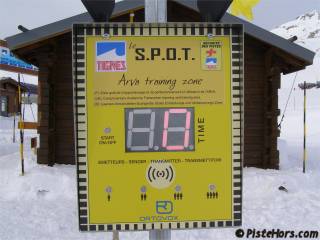
Every second counts!
The result was the VS68 which worked on the newly established frequency of 457 kHz. The VS68 was soon adopted by civilian ski mountaineers and remained in production until the mid-90s. Autophon is now part of Mammut who are currently beta testing their Pulse digital avalanche beacon, the state of the art in detecting avalanche victims.
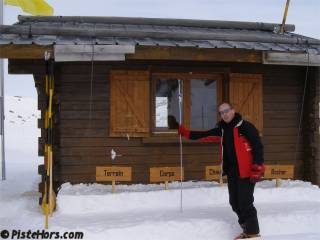
What lies beneath?
However owning an avalanche beacon has often seemed like applauding with one hand. It is not easy to put in the training necessary to be proficient in avalanche rescue. First of all you need one or more signals to search and just as importantly they need to be buried at a reasonable depth in order to simulate the problems associated with the final stages of searching.
Research suggests that professional searchers, piste patrollers, guides and rescue workers, are almost twice as likely to find an avalanche victim alive with a beacon compared to recreationalists. The difference is training and training opportunities.
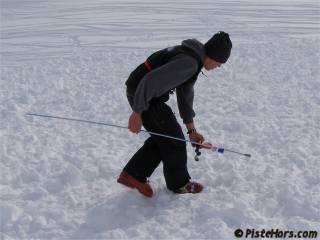
T+3, like a bloodhound
In 2002 there were two developments. The American company Backcountry Access who make the Tracker DTS avalanche beacon installed their first beacon basin at Loveland in Colorado. The system was a bit “Heath Robinson” consisting of a control panel connected to a number of Tracker DTS beacons buried under the snow. At Zinal in the Swiss Valais the director of ski lifts, Pascal Bourquin and local architect Jérôme Prillard developed a beacon controlled backcountry access gate then proposed a system of radio controlled transmitters that could be buried all winter under the snow. The system was built by the Haute Ecole Arc Ingénierie and Mammut and installed for the 2002/3 season.
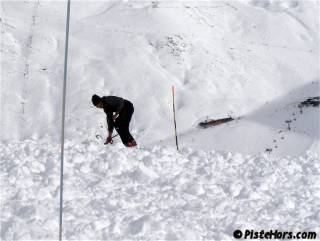
T+5, first victim located
The idea has spread rapidly and been refined. In France at least 8 “arva parcs” as they are known locally have been installed using systems developed by Mammut and Ortovox. Most of the systems are “self-service”; people can just stop by and use them but the resorts also organize training courses and these can be customized for individual groups. They have also proved popular with guides and professionals. The day we visited the “Freeride Hut” at Tignes members of the fire brigade, specialist police units and a guided group from Alpine Experience had stopped by to use the area. Maxime Higel, who has worked with Tignes piste services to develop the freeride hut and SPOT off-piste area told us that having a permanent training area benefited both professionals and amateurs and obviated the logistical headache of regular training for both piste patrollers and the local rescue services.
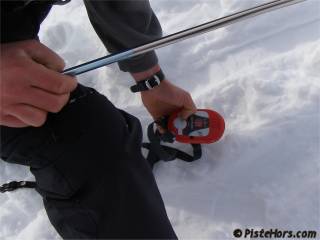
T+6, fine search
Certainly the level of training is much more effective. Seb, who was on duty at the Freeride hut, showed us around the facility. You can start off with a probe area. This lets you feel the difference between different types of object – ski boots, ground, rocks and a body. The training zone is self-service. You can even stop by before the pistes open if you are touring and use it. The system consists of 10 transmitters buried at different depths and the control box lets you simulate from 1 to 4 victims. Pressing the “start” button randomly selects the beacons that will transmit and a large timer counts to 15 minutes. Beyond this time real victims would start to suffocate as fresh air runs short. The system emits a series of loud beeps at 3 minute intervals.
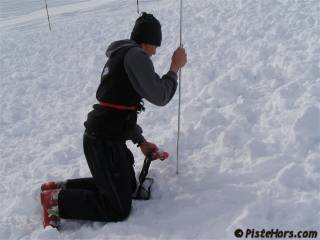
Probing to confirm location and depth
Because the beacons are buried all winter there are no surface clues to their location. The system makes it simple to practise multiple victim searches. Something that is often ignored in training. The beeps and timer adds to the stress when searching although this is nothing compared to having one of your buddies under the snow. At the end of the session each user has a better understanding of how his equipment – beacon and probe works and where he needs more practise.
Avalanche beacons remain the best method of finding a completely buried victim but they are not a green light to ski any slope. Data from the French Association for the Study of Snow and Avalanches (ANENA) for the last two seasons shows that live beacon rescues occur in only around a half of incidents.
Further Information:
Complete list of French Beacon Basins
References:
Companion Rescue and Avalanche Transceivers: The U.S. Experience – Dale Atkins CAIC.
Le jeu de la Vie. Montagnes Magazine November 2005. Philippe Descamps
Bilan des accidens d’avalanches. Neige et Avalanches, Frederic Jarry, December 2005, December 2004
Posted by
davidof on Friday, 03 March, 2006 at 09:23 AM
Do not forget the usefulness of checking your own equipment when doing these types of training. Early this season we found 1 of our Ortovox was going bad, and 2 of 3 beacons that a friend had used were having problems and had to be sent in for repair! Keep your equipment in good repair as well - these beacons do not last forever without maintenance. The Ortovox F1 for example has a date inside the battery cover and should be sent in to the manufacturer for a check at that time.
Posted by on Tuesday, 28 February, 2006 at 11:45 AM
Page 1 of 1 pages
Comments are now closed
